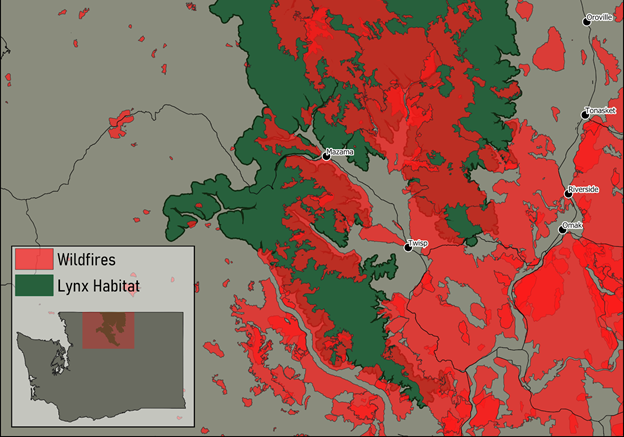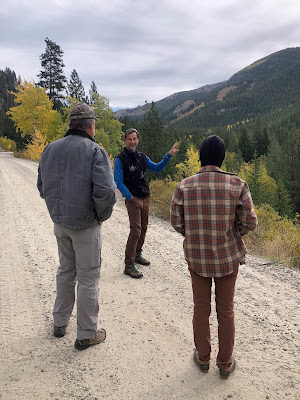Wildfire and Lynx - Field Trip with Paul Hessburg
Earlier this month, Home Range's Research Director, Carmen Vanbianchi, organized a field trip with a group of collaborators at the United States Forest Service (USFS), Washington Department of Fish and Wildlife (WDFW), and Washington Conservation Science Institute (WCSI) to discuss fire impacts on the threatened Canada lynx.
More than 20 distinct fires have burned in the vicinity of the Methow Valley over the past 20 years, including the Cub Creek and Cedar Creek fires that burned on opposite sides of the valley much of this past summer. On our field trip we toured burns of various ages to the north of Winthrop and Mazama, an area extending all the way to the Canadian border that comprises much of the last remaining good lynx habitat in Washington state, to learn how we can best manage for future fire impacts in this region.
Joining us were wildlife biologists and lynx researchers Bill Gaines (WSCI), Andrea Lyons (WSCI), John Rohrer (USFS), and Scott Fitkin (WDFW), along with Paul Hessburg, a landscape ecologist at the USFS Forest Sciences Laboratory who both specializes in fire and led our field trip discussions. Our conversations with Paul illuminated the fact that the landscape pattern we see now is a result of a more recent fire suppression history, rather than the true historical condition. This historical condition, a far more heterogenous "salad bowl" of forest structure as Paul describes it, includes fire patterning made up of multi-aged burns, different sized burns, and variable burn intensities where some areas reburned frequently and the resulting landscape included abundant edge habitat, open meadows, and areas of unburned forest. Accordingly, this “salad bowl” is also what lynx historically persisted on.
However, because such limited unburned lynx habitat exists in Washington, lynx conservation efforts have clung to the last remaining swaths of contiguous young lodgepole forest and mature, multi-story spruce fir forest that lynx prefer, looking for ways to preserve this critical habitat. Paul challenges this notion and we discussed alternative actions, including meadow restoration and prescribed burn activities, that could both create a more resilient forest structure and ensure that widely distributed patches of good lynx habitat both persist into the future.
As Home Range proceeds with its lynx-wildfire study, we are grateful for the support of Paul and all of our other collaborators and look forward to incorporating our learnings from this field trip into our research. Stay tuned!
Written by Becca Windell, October 2021. Home Range Wildlife Research.

